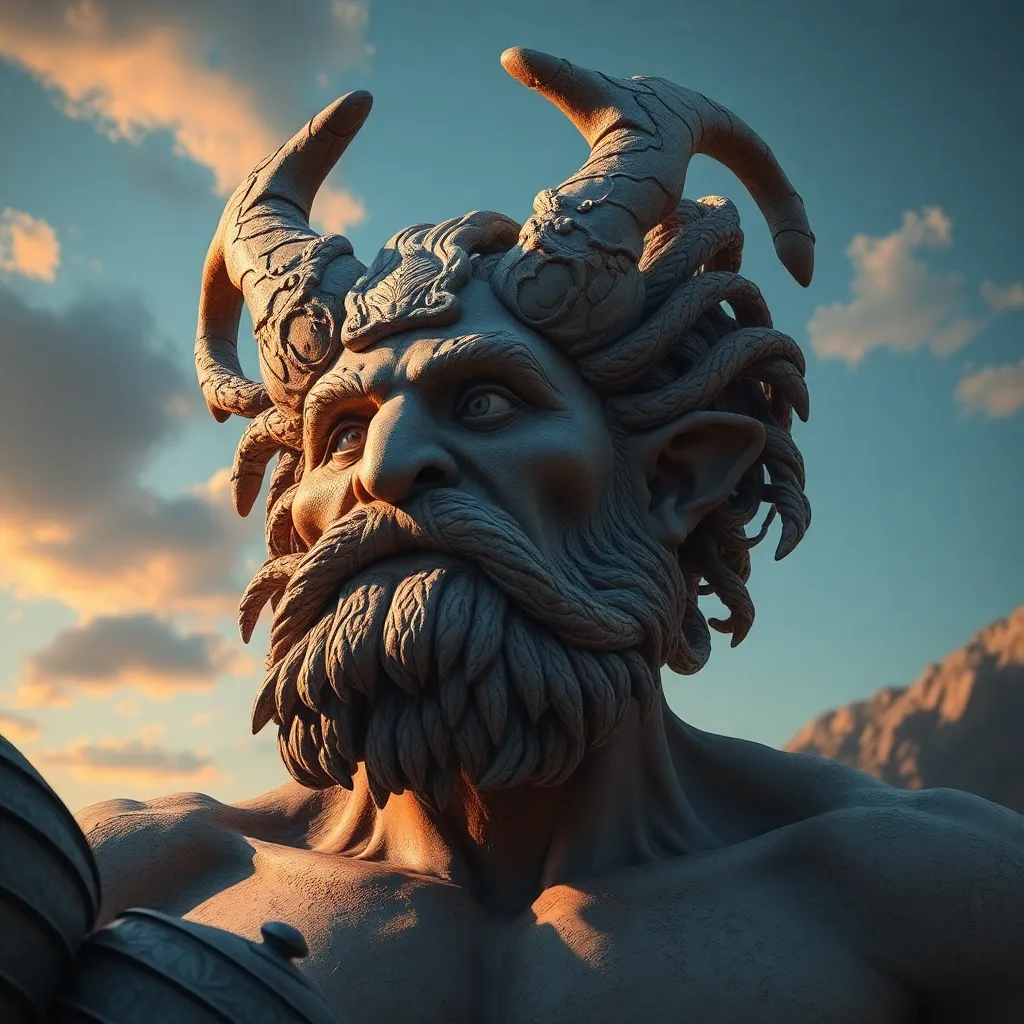The Enduring Legacy of Cyclopes in Modern Storytelling
Introduction: The Allure of Cyclopes in Mythology
Cyclopes, the one-eyed giants of ancient mythology, have captivated the imagination of cultures around the world. Originating from Greek mythology, these formidable beings were known not only for their immense strength but also for their exceptional craftsmanship. The Cyclopes played significant roles in various myths, often serving as both creators and destroyers. Their legacy transcends time, leaving an indelible mark on modern storytelling across different mediums.
The purpose of this article is to explore the enduring legacy of Cyclopes in contemporary narratives, examining how these ancient figures have been reinterpreted and reshaped to reflect modern values and concerns.
The Origin of Cyclopes: From Myth to Icon
The historical roots of Cyclopes can be traced back to ancient Greek literature, with notable mentions in Homer’s “The Odyssey,” where the hero Odysseus encounters the infamous Polyphemus. In Greek mythology, Cyclopes were often depicted as monstrous beings, powerful yet crude, embodying the untamed forces of nature.
Interestingly, variations of Cyclopes appear in other mythologies:
- Roman Mythology: The Roman version of Cyclopes, influenced by Greek narratives, often depicted them as skilled blacksmiths working for the god Vulcan.
- Polynesian Mythology: Some Polynesian cultures have similar one-eyed giants, showcasing the universal appeal of the Cyclopean archetype.
These ancient narratives laid the groundwork for modern interpretations of Cyclopes, allowing them to evolve into complex characters that resonate with contemporary audiences.
Symbolism of the Cyclopes: Power and Isolation
Cyclopes symbolize brute strength and exceptional craftsmanship, representing the dual nature of power: its potential for creation and destruction. They are often portrayed as solitary figures, highlighting themes of isolation and alienation. This symbolism can be linked to modern societal issues, such as:
- The struggle for individuality in a conformist society
- The consequences of unchecked power and its impact on relationships
- Isolation felt in the modern world despite technological advancements
Through their narratives, Cyclopes serve as a mirror reflecting humanity’s struggles with power dynamics and the search for connection.
Cyclopes in Literature: From Homer to Contemporary Works
The depiction of Cyclopes in literature has evolved significantly from ancient times to the present. In Homer’s “The Odyssey,” Polyphemus is portrayed as a fearsome creature who embodies the dangers of the unknown. This classic representation has inspired countless adaptations and reimaginings.
Modern literary works have continued to explore the Cyclopean archetype:
- Fantasy Novels: Authors like J.R.R. Tolkien have incorporated Cyclopean characters into their worlds, blending myth with new narratives.
- Graphic Novels: Series such as “The Odyssey” by Gareth Hinds present Cyclopes in visually striking ways, appealing to younger audiences.
Notable authors who have reimagined Cyclopes include Neil Gaiman and Rick Riordan, expanding the scope of these characters and integrating them into contemporary themes.
The Cyclopean Archetype in Film and Television
Cyclopes have made a significant impact in popular culture, particularly in film and television. Their portrayal has evolved from terrifying giants to more nuanced characters. Visual media has transformed the Cyclopean image, allowing for creative interpretations.
Some iconic Cyclopean characters include:
- Monsters in animated films: Characters like the Cyclops from “Hercules” showcase a blend of humor and menace.
- Horror genres: Films such as “The Descent” feature Cyclopean creatures that embody primal fears.
This evolution reflects changing societal perceptions of monstrosity and the complexities of character development.
The Role of Cyclopes in Video Games and Interactive Media
In the realm of video games, Cyclopes serve as formidable foes or characters that players can engage with. Their larger-than-life presence allows for dynamic gameplay experiences. Some notable examples include:
- God of War: Cyclopes appear as bosses, testing players’ combat skills and strategies.
- Final Fantasy: The series features Cyclopean figures as summons or powerful beings that aid players.
The significance of player interaction with Cyclopean figures enhances the immersive experience, allowing for exploration of themes such as power, conflict, and morality. Current trends in game design continue to highlight the legacy of Cyclopes, blending mythological elements with innovative mechanics.
Cultural Impact: Cyclopes in Art and Folklore
The representation of Cyclopes in visual art throughout history reflects the cultural significance of these figures. From ancient pottery to Renaissance paintings, Cyclopes have inspired artists to explore themes of strength, chaos, and creativity.
Folklore has also played a crucial role in shaping how Cyclopes are perceived in contemporary culture:
- Folkloric tales: Various cultures have their own stories of one-eyed giants, contributing to a rich tapestry of Cyclopean lore.
- Modern art: Artists continue to draw inspiration from Cyclopes, using them as symbols of personal and societal struggles.
This ongoing dialogue between history and modernity showcases the Cyclopes’ ability to adapt and inspire across different creative expressions.
Conclusion: The Lasting Influence of Cyclopes on Storytelling
Throughout this exploration of Cyclopes, we have examined their origins, symbolism, and representations in literature, film, video games, and art. The Cyclopean archetype serves as a reminder of humanity’s complexities, reflecting our struggles with power, isolation, and creativity.
The enduring legacy of Cyclopes continues to shape narratives, inspiring future generations of storytellers to reimagine these fascinating characters. As cultures evolve, so too will the representations of Cyclopes, ensuring their place in the rich tapestry of global storytelling.




